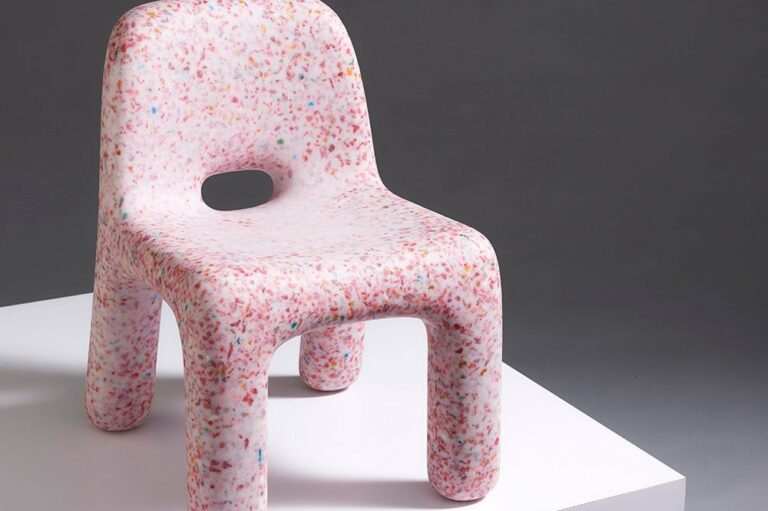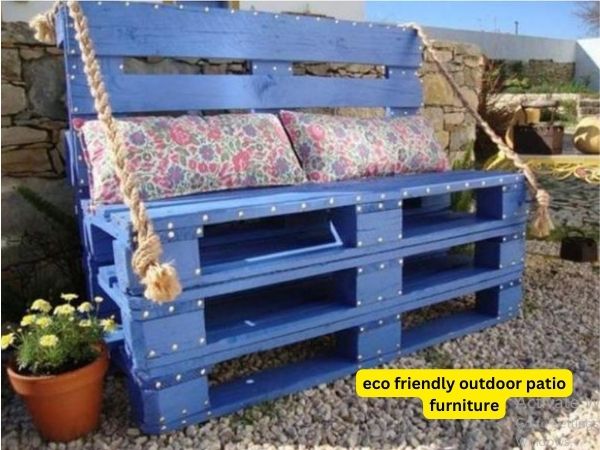Discover Eco-Friendly Furniture Designs: Examples & Inspiration
Today we discuss Eco-Friendly Furniture Designs. You’re in the right place! In this blog article, we’ll explore some incredible examples of eco-friendly furniture designs that not only add a touch of style to your space but also help protect the planet.
So, what are some examples of eco-friendly furniture designs? From repurposed materials to innovative manufacturing techniques, we’ll dive into the world of sustainable furniture and inspire you to make more conscious choices for your living environment. Let’s embark on this journey of eco-conscious design together!
What are some examples of eco-friendly furniture designs?
Sustainable Materials
One of the key aspects of eco-friendly furniture designs is the use of sustainable materials. These materials are sourced responsibly and have a lower environmental impact compared to traditional furniture materials. Here are some examples:
- Bamboo: Bamboo is a fast-growing renewable resource that can be harvested without causing deforestation. It is a popular choice for furniture due to its strength and durability.
- Reclaimed Wood: Reclaimed wood is salvaged from old buildings, barns, or other structures. By using reclaimed wood, furniture designers can give new life to old materials and reduce the demand for new timber.
- Cork: Cork is harvested from the bark of cork oak trees, allowing the trees to continue growing. It is a versatile material used in furniture for its natural look and sustainable properties.
- Recycled Plastic: Furniture made from recycled plastic helps reduce plastic waste and minimizes the need for new plastic production. It can be molded into various shapes and is suitable for outdoor use.
- Organic Fabrics: Upholstered furniture can be made using organic fabrics such as hemp, organic cotton, or linen. These fabrics are grown without harmful pesticides or synthetic fertilizers.
Minimalist Design
Eco-friendly furniture often embraces minimalist design principles, focusing on simplicity and functionality. By using minimal materials and clean lines, designers create furniture that is both elegant and environmentally friendly. Some examples of minimalist eco-friendly furniture designs include:
- Simple Wooden Chairs: Chairs with clean, uncomplicated designs made from sustainable wood are a popular choice for eco-conscious consumers.
- Modular Shelving Systems: Modular shelving systems are versatile and allow users to customize their storage solutions. These systems are often made from sustainable materials and can be easily disassembled and rearranged.
- Foldable Furniture: Foldable furniture, such as collapsible tables and chairs, is designed to be space-saving and multifunctional. It is often made from sustainable materials like bamboo or recycled metal.
Upcycling and Repurposing
Another approach to eco-friendly furniture design is upcycling and repurposing. Instead of creating new furniture from scratch, designers transform old or discarded materials into unique and functional pieces. Here are some examples:
- Pallet Furniture: Pallets are commonly used in shipping and can be upcycled into various furniture pieces like coffee tables, bed frames, or outdoor seating.
- Wine Barrel Furniture: Wine barrels can be repurposed into stylish furniture items such as tables, chairs, or even sink vanities.
- Vintage Furniture Restoration: Restoring and updating antique or vintage furniture keeps these pieces out of landfills and gives them a new lease on life.
Multi-Functional Designs
Eco-friendly furniture designs often prioritize functionality and versatility. Multi-functional furniture serves multiple purposes, reducing the need for additional pieces and maximizing space utilization. Some examples include:
- Convertible Sofas: Sofas that can be converted into beds or have storage compartments are perfect for smaller living spaces.
- Folding Desks: Folding desks provide a workspace when needed but can be easily folded away to save space.
- Storage Ottomans: Ottomans with built-in storage offer a convenient way to store items while providing additional seating.
Eco-Friendly Manufacturing Processes
Eco-friendly furniture designs not only consider the materials and functionality but also the manufacturing processes involved. Here are some examples of eco-friendly manufacturing practices in the furniture industry:
- Energy-Efficient Production: Furniture manufacturers can reduce their environmental impact by using energy-efficient machinery and production methods.
- Water Conservation: Implementing water-saving measures in manufacturing processes helps reduce water consumption and waste.
- Non-Toxic Finishes: Using non-toxic finishes and adhesives in furniture production ensures that the final products do not release harmful chemicals into the environment or pose health risks to consumers.
- Reduced Packaging: Minimizing packaging materials and using sustainable packaging options, such as recycled or biodegradable materials, helps reduce waste.
Fair Trade and Ethical Practices
Eco-friendly furniture designs often prioritize fair trade and ethical practices. These practices ensure that the workers involved in the production process receive fair wages and work in safe conditions. Some examples include:
- Supporting Artisans: Purchasing furniture made by local artisans or from fair trade organizations supports their livelihoods and helps preserve traditional craftsmanship.
- Transparency in Supply Chains: Furniture brands that prioritize transparency in their supply chains ensure that the materials used are sourced ethically and responsibly.
- Socially Responsible Certifications: Look for furniture brands that hold certifications like Fair Trade Certified or Forest Stewardship Council (FSC) certification, which ensures the products meet strict social and environmental standards.
Green Initiatives and Carbon Neutral Practices
Many eco-friendly furniture designs incorporate green initiatives and strive to achieve carbon neutrality. Companies that prioritize these practices often take into account the following:
- Renewable Energy Usage: Furniture manufacturers can choose to power their operations with renewable energy sources like solar or wind power.
- Carbon Offsetting: Companies can offset their carbon emissions by supporting projects that reduce greenhouse gas emissions, such as reforestation or renewable energy projects.
- Lifecycle Assessment: Conducting a lifecycle assessment helps furniture designers understand the environmental impact of their products from raw material extraction to disposal, enabling them to make more sustainable choices.
Collaboration with Environmental Organizations
Eco-friendly furniture designers often collaborate with environmental organizations to further their sustainability goals. These collaborations may involve:
- Research and Development: Collaborating with environmental organizations can help furniture designers stay up to date with the latest sustainable materials and manufacturing techniques.
- Environmental Advocacy: Furniture brands can partner with environmental organizations to raise awareness about sustainable practices and promote responsible consumption.
- Conservation Projects: Collaborations may also extend to supporting conservation projects aimed at preserving natural resources and habitats.
Eco-Friendly Outdoor Furniture
Eco-friendly furniture designs are not limited to indoor spaces. Outdoor furniture can also be designed with sustainability in mind. Here are some examples:
- Patio Furniture Made from Recycled Materials: Outdoor furniture made from recycled plastic or reclaimed materials is an excellent choice for eco-conscious consumers.
- Sustainable Wood Outdoor Furniture: Furniture made from sustainably sourced wood, such as teak or eucalyptus, can withstand outdoor conditions while minimizing environmental impact.
- Solar-Powered Outdoor Lighting: Incorporating solar-powered lighting into outdoor furniture design reduces energy consumption and offers an eco-friendly lighting solution for outdoor spaces.
Local and Handmade Production
Choosing locally made and handmade furniture can be another way to support eco-friendly designs. Here’s why:
- Reduced Carbon Footprint: Locally produced furniture reduces transportation-related emissions and supports local economies.
- Preserving Craftsmanship: Handmade furniture often utilizes traditional craftsmanship techniques passed down through generations, preserving cultural heritage.
- Customization and Unique Designs: Locally made furniture allows for customization and unique designs that reflect the local culture and aesthetics.
10 Eco-Friendly Building Materials | Sustainable Design
Frequently Asked Questions
What are some examples of eco-friendly furniture designs?
There are several examples of eco-friendly furniture designs that promote sustainability and minimize environmental impact. Bamboo furniture is a popular choice as bamboo is a fast-growing and renewable resource. Recycled furniture made from reclaimed materials such as wood pallets, salvaged metal, or old furniture repurposed into new items also exemplify eco-friendliness. Additionally, furniture made from sustainable materials like FSC-certified wood or natural fibers like organic cotton or hemp contribute to eco-friendly design.
How can furniture made from reclaimed wood be considered eco-friendly?
Furniture made from reclaimed wood is considered eco-friendly because it utilizes existing resources instead of harvesting new ones. By repurposing salvaged wood from old buildings, furniture, or shipping pallets, it helps reduce deforestation and waste. Reclaimed wood furniture also adds character and uniqueness to a space as the wood often showcases its previous life, giving it a distinct charm.
What is FSC-certified wood furniture, and why is it eco-friendly?
FSC-certified wood furniture refers to furniture made from wood sourced from responsibly managed forests certified by the Forest Stewardship Council (FSC). The FSC ensures that the wood is harvested sustainably, taking into account environmental, social, and economic factors. By choosing FSC-certified wood furniture, you can support forest conservation, promote biodiversity, and contribute to the reduction of illegal logging and deforestation.
How does furniture made from bamboo contribute to eco-friendly design?
Furniture made from bamboo is considered eco-friendly due to bamboo’s rapid growth and renewability. Bamboo is one of the fastest-growing plants on Earth, reaching maturity in a few years compared to traditional hardwood trees that take decades. Moreover, bamboo requires minimal water, pesticides, and fertilizers to grow, making it a sustainable choice. Its strength and versatility also make it a suitable material for various furniture designs.
What are the benefits of furniture made from recycled materials?
Furniture made from recycled materials offers several benefits. Firstly, it helps reduce waste by repurposing materials that would otherwise end up in landfills. Additionally, it saves energy and resources that would be required to produce new materials. By choosing furniture made from recycled materials, you contribute to the circular economy, extend the lifespan of resources, and lessen the demand for virgin materials, thus reducing the environmental impact.
Final Thoughts
The article explored various examples of eco-friendly furniture designs that promote sustainability and reduce environmental impact. These designs include furniture made from recycled materials such as reclaimed wood, recycled plastic, and repurposed materials. Additionally, furniture that utilizes renewable resources like bamboo, cork, and organic cotton were highlighted. Incorporating energy-efficient manufacturing processes and non-toxic finishes also contribute to the eco-friendliness of these designs. By choosing eco-friendly furniture, we can make a positive impact on the environment while still enjoying stylish and functional pieces in our homes. What are some examples of eco-friendly furniture designs?



